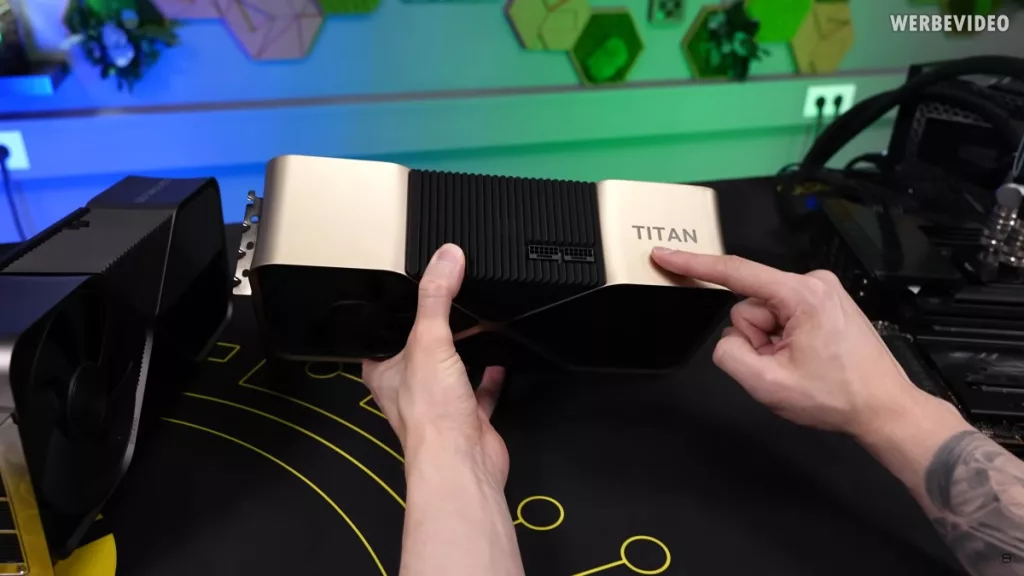
The mythical NVIDIA GeForce RTX Titan ADA was never released, but a fully functional prototype has been tested, showing impressive performance. Most folks would probably have better luck spotting Bigfoot hanging out at the local convenience store than sourcing a fully functional prototype of this particular graphics card. Rumored to have been in existence since before the launch of the ADA-based RTX 40-series. This RTX Titan is in some ways the stuff of dreams. Since the RTX 40-series has come and gone, there’ve been various images of parts of RTX Titan prototypes to surface, stories of clandestine auctions and sales of it, but an actual hardware testing of one has largely been absent from mainstream media, but famed overclocker and now tech entrepreneur Der8auer has managed to obtain one and put it through the rounds.
A quick recap of the top-end ADA GPUs. At the top of the consumer stack is the NVIDIA GeForce RTX 4090 with 16,384 cores and 24 GB GDDR6X memory. At the bottom of the prosumer stack is the NVIDIA RTX 6000 ADA with 18,176 cores and 48 GB GDDR6 memory. Both use the AD102 die and memory running on a 384-bit bus. Now enter the RTX Titan ADA, a truly behemoth among any consumer graphics card ever seen. It’s a solid qual-slot card that will take most folks using two hands to hold. According to testing, it has a fully enabled AD102 die with 18,432 cores paired with 48 GB GDDR6X memory.
Der8auer was able to get the GPU running using older drivers, where it scored 15% higher than the RTX 4090 in 3DMark Time Spy and around 10% performance gains at 4K gaming. The VBIOS limited TDP to 450W, which is unfortunate given this is the only known NVIDIA consumer-grade GPU so far to have two 12V-HPWR connectors, which means that theoretically it could have had up to 1200W provided. It’s obvious why NVIDIA chose not to launch the Titan despite these impressive numbers.
- First and foremost, the Titan would’ve definitely deterred sales of the RTX 6000 ADA due to faster memory and a fully unlocked version of the same GPU. Price might’ve made a difference, but that’s hard to speculate on.
- Availability of perfectly binned chips might’ve been a major issue and could’ve led to very high manufacturing costs, thus also meaning an equally unobtainium price.
- If early Blackwell AD202 dies were already available for internal testing, NVIDIA would’ve known the refined die was more power efficient and outperformed the AD102, so at that point better to just wait and release the RTX 5090.
Speaking of the GeForce RTX 5090, it’s well known that when overclocked, that graphics card can pull over 600W. Without opening the Pandora’s box of melted connector stories, it’s also obvious that the voracious power appetite of the GB202 and its 32 GB GDDR7 memory are hitting a power wall, so some wonder why NVIDIA opted not to use a 2nd connector for it. When asked about potential power limits with RTX 40 series cards, Vince Lucido, aka KINGPIN, once said that 2 connectors would be the solution to use. Well, regardless, we’ll likely never really know why NVIDIA ditched the RTX Titan ADA, but hope is still alive that it may bring back the original king of kings that once shocked the world with price tags to exceed $1,000 when most folks thought paying above $400 was too much.
